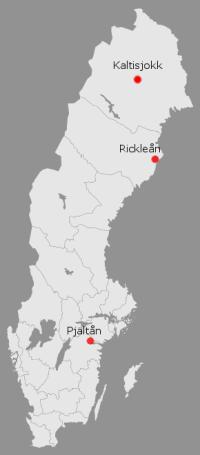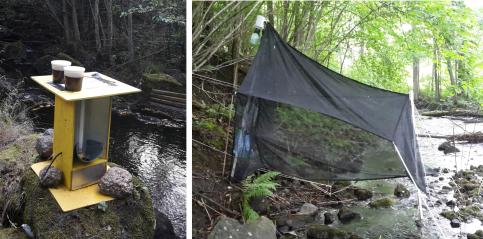Methods

Material was collected with light traps and passive traps in three different locations in Sweden: Pjältån, Rickleå, and Kaltisjokk.Every survey contained two traps, one passive and one attracting (light) trap. All datasets contain continuous data from a whole season with the exception of dates when traps have failed or been flooded. All specimens were identified to species and sex.
- Pjältån
- Traps: Light/Malaise
- Year: 2016
- Rickleå 1972
- Traps: Light/Suction
- Year: 1972
- Rickleå 1973
- Traps: Light/Suction
- Year: 1973
- Kaltisjokk 1
- Traps: Light/Window
- Year: 1974
- Kaltisjokk 2
- Traps: Light/Window
- Year: 1974
The analyses were done with odds ratio, meta-analysis and linear regression.

An example of traps
Traps used at Pjältån in 2016. A light trap (attracting) to the left and a Malaise trap (passive) to the right.
Responsible for this page:
Director of undergraduate studies Biology
Last updated:
04/25/17
